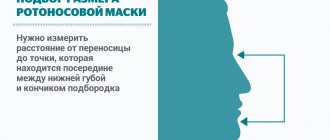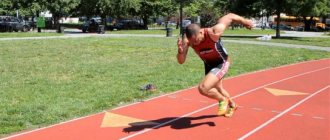If we understand running as a mass sport, then it is dominated by medium and long distance varieties. This is due to the fact that distances of 3000-5000 meters are more comfortable for regular jogging than sprinting. In addition, long distances have a positive effect on the cardiovascular and respiratory systems, as well as on the development of endurance.
Most of those who have been running for six months or more show a desire to participate in mass starts, but such starts involve running along the highway for 10 kilometers or more. At the same time, there is a competitive moment and a person, without knowing it, runs faster than his capabilities, which makes the chances of finishing successfully becomes less.
If the desire to participate in road running is great, but the performance still leaves much to be desired, then endurance running is a good way to improve the situation.
Option 1. If you drive more quietly, you will go further
Yes, yes, nothing new.
But just listen to how much you can improve your results! I myself don’t like to prolong pleasure, and the desire to achieve everything as quickly as possible often takes precedence over caution. I'm lucky so far, and the only unpleasant consequences are hellish strength. Some of my friends were not so lucky. There can be a lot of options for punishment for such impatience: starting with microtraumas and ending with fractures. Therefore, here is an example from the life of a person who was able to achieve amazing results through patience and perseverance. And soon he will achieve even more!
So, meet Craig Beasley from Canada. Craig started running two years ago and at that time could only run for 30 seconds before breaking into a walk and walking for 4.5 minutes. Then ran again for 30 seconds. He repeated this cycle eight times for a total of 40 minutes. He tried not to miss and trained three times a week.
30 weeks later, Beasley was able to run 30 minutes without stopping and completed his first half marathon in 2 hours 12 minutes. He decided to continue training and trained even in winter at sub-zero temperatures. In May, he was already able to run non-stop for 2 hours 45 minutes and do six sets of 400 meters in 1 hour 45 minutes. The first marathon awaits him ahead.
Try increasing the distance gradually. For example, increase by 1 km at the end of each week for three weeks in a row (for example, 5, 6, 7 km), and in the fourth week take a vacation, rest and recuperate. Then start adding 1 km again.
Option 2. Bart Yasso method
This training option was used by Bart Jasso, manager of Runner's World Race. It consists of running 800 meters at the speed at which you plan to run your first marathon. So if you want to run it in 4 hours 30 minutes, try running 800 meters in 4 minutes 30 seconds. This training was written about 10 years ago, and since then this method has gained many fans.
Doug Underwood is one of the many fans of this technique. He has only been running for three years and has already completed two marathons in 3 hours 55 minutes and 3 hours 53 minutes. After that, he really wanted to take part in the Boston Marathon and decided to take his training seriously. His training was based on the Yass method.
To get to the Boston Marathon, you need to do it in 3 hours and 30 minutes. So Underwood decided to train until he could run 800 meters in 3 minutes 30 seconds, and combine 10 sets into one run, interspersing 3 minutes 30 seconds of jogging between the fast runs.
Underwood ended up running the Baton Rouge Beach Marathon in 3 hours, 30 minutes, 54 seconds. This was quite enough to qualify for the Boston Marathon.
What's the best way to train? Try running the Jasso plan once a week. Start with 4-5 800m intervals at the speed you set for yourself, and then add one interval per week until you get to 10.
Sports nutrition – creatine
If you regularly run, you should take creatine. Today, creatine monohydrate is best suited - it is absorbed by the body faster and better.
As a result of taking this supplement, you will get an increase in muscle mass and a good supply of endurance. The main thing is to use creatine correctly.
No side effects have been identified from creatine, but it is recommended, just in case, not to use it in adolescents until puberty.
You won't get away with it just by taking creatine. To increase endurance, you need to train intensely. This dietary supplement only works in conjunction with training, otherwise, as unnecessary, all consumed creatine will be excreted as creatinine in the urine.
Option 3. Long and slow run
Megan Arbogast has been running marathons for five years, and her best time is 2 hours 58 minutes. Everything would be fine, but there is one problem: while preparing for the marathon, she brought herself to the point of exhaustion.
And starting in 1998, she began training according to a program that was developed by Warren Finke, a famous trainer from Portland. Finke believes that marathon runners should focus on easy running that will help them achieve their desired level of endurance without injury every few months. He believes many runners train too hard, get injured and then never reach their upper limit.
Finke's program is based on learning that is built on effort. He believes that if a runner runs at 80% of his standard pace, he will perform better than if he runs at 90%. Just a 10% difference helps you avoid injury and achieve the desired results.
And this program helped Megan a lot. Two years after starting training with this system, she improved her personal result to 2 hours 45 minutes.
How to train using this system? If you run 10km at an average pace (a kilometer in 7 minutes 30 seconds), then try running the same distance at a kilometer pace in 9 minutes 23 seconds. So you just need to take your pace and multiply it by 1.25.
What are the benefits of endurance training and what does it develop?
At the physiological level, endurance training primarily develops central and peripheral aerobic components.
marathon and half marathon training plans and start training today!
Central components (adaptation of organs and body systems):
- Stroke volume of the heart - the heart muscle becomes stronger and more voluminous, pulse zones decrease, pressure normalizes.
- Hemoglobin mass and blood volume - with systematic exercise, a positive increase in both indicators is observed.
Peripheral components (muscle fiber adaptation):
- The activity and volume of aerobic enzymes increases.
- The density of the capillary network increases.
- The amount of myoglobin increases, which helps transport oxygen from the blood to the muscles.
- Muscle fibers are recruited towards more economical ones.
Interestingly, the development of all of these components has a direct and inverse correlation with the development of endurance, i.e. They both develop with the help of endurance training, and their development stimulates the growth of endurance.
Photo: Charles Knox/Getty Images
Option 4: Record every workout
When you've been running marathons for 25 years and have a degree in physiology, you know some interesting things about training. Bill Pearce, Chairman of the Department of Health at the University of Fermanagh, has developed a program that works very well. At 53, Pierce runs the marathon in 3 hours 10 minutes—not much slower than when he ran his first marathon 20 years ago.
The secret is that Pierce runs three days a week, but on those days he trains hard. The remaining four days he just rests: he doesn’t run at all, but he can do some strength training or play tennis.
Pierce creates a work plan for each workout that includes speed and distance. One day he runs a long distance at a slow pace. On the second day he runs intervals, and on the third he does a tempo workout. He works at a higher intensity than others recommend, but by alternating his workouts, the risk of injury is reduced. This training plan has proven to be ideal for Pierce, and he has been practicing it for many years.
Pierce's training schedule: interval training on Tuesdays, tempo training on Thursdays, long distance slow training on Sundays. Interval training - 12 reps of 400 meters or six reps of 800 meters at a pace slightly faster than he runs his 5K. On tempo days, Pierce runs 4 miles 10 to 20 seconds faster than the pace he runs his 10K. And finally, a long, slow run—15 miles at a pace that's 30 seconds slower than his marathon pace. You can calculate your schedule in the same way.
Running Economy
Proper technique will make your running more efficient and economical, allowing you to run further and faster as you use less energy. This can be achieved by adhering to the following recommendations:
- straight posture while running;
- the landing should occur exactly (exactly) under the body, and the push should occur in front of you;
- the arms are bent at the elbows at an angle of approximately 90 degrees, and the palms are slightly clenched into fists;
- cadence (step frequency) is approximately 170-180 steps per minute
Excess weight can cause poor running efficiency as it will result in higher energy expenditure while running.
Based on materials from runtastic.com
Option 5: Do plyometrics
Plyometrics is a sports technique that uses the impact method. In the modern sense - jumping training. Plyometrics are used by athletes to improve athletic performance that requires speed, quickness, and power. Plyometrics are sometimes used in fitness and are one of the main elements of parkour training. Plyometric exercises use explosive, fast movements to develop muscle strength and quickness. These exercises help the muscles develop the greatest force in the shortest possible period of time.
Dina Drossin is one of America's all-time top female runners. She once asked Weatherford, a coach at the US Olympic Committee Training Center in Chula Vista, California, to develop a special program that would allow her to develop endurance and improve her speed.
Weatherford said he hasn't worked with distance runners, but he'll give it a try. He ended up coming back with two ideas that worked great. Weatherford and Drossin started with core strengthening and continued with explosive plyometrics for the legs, focusing on the fundamentals and choosing quality over quantity.
Drossin performed various types of jumps and after these trainings ran the London Marathon in her new personal (and American) record of 2 hours 21 minutes 16 seconds. And this is 5 minutes faster than her result before this marathon.
Try incorporating jumping into your workouts. For example, running in short, fast steps for 15–20 meters. This is when you run in small steps, moving your feet quickly and lifting your knees quite high, but not too high. Use your arms vigorously while running. Rest and then repeat 6-8 more times. Train in this way 1-2 times a week, adding 5 minutes of various jumps (on one leg, on two legs, etc.). Jumps are performed on soft grass or dirt.
Increased overall endurance
Following a few simple rules will help maintain the results achieved during training, as well as help strengthen the body's endurance.
- Sound and healthy sleep. Systematic lack of sleep undermines your strength. If you don’t devote enough time to sleep, a person will experience constant fatigue, fatigue and, of course, is unlikely to be able to show any results in sports.
- Drink more clean water. When there is a lack of fluid in the body, a feeling of fatigue often occurs.
- Proper nutrition. Avoiding fried, fatty, pickled, smoked, flour and sweet foods will help improve the general condition of the body, increase energy potential and gain a feeling of lightness in the body. There are also a number of products that help develop endurance: freshly squeezed juices (carrot, tomato, apple, pumpkin), dried fruits, citrus fruits, walnuts, honey, wheat germ, green tea, chicory, coffee.
- Getting rid of bad habits. One cigarette smoked in the morning can significantly undermine the energy reserves of the human body. This also includes any alcohol. A glass of beer drunk in the evening will definitely have a negative impact on your endurance.
- A healthy psychological atmosphere in the family and at work. If a person often experiences stress, enters into conflicts with family members or colleagues, his reserves of physical and mental strength are undermined over time, he begins to get tired quickly, and his stamina decreases. If you cannot resolve a conflict at work, you should think about changing your place of work. The same applies to the family - if not a day goes by without swearing, you will have to consider the issue of separation.
Many special practices help increase your internal energy reserves. Here everyone must choose the technique that will be most suitable. Breathing exercises help some people, psychotraining and meditation help others, yoga helps others. Any of these practices helps strengthen the psyche, expand the body’s hidden reserves, and relieve excess stress.
You might be interested in this video:
Previous article: All types of sports running and the characteristics of each Next article: Health running
Option 6. Long tempo workouts
Military man Patrick Noble ran his first marathon in 1986 in 3 hours 15 minutes, feeling like a hero. Noble decided not to stop there and ran 50 marathons without breaking his 3-hour barrier. But 52 times he managed to jump above his head: he ran the marathon in 2 hours 58 minutes 23 seconds. Patrick believes his special approach to training - running at a fast pace over long distances - helped him.
The standard approach to tempo training involves running for 20 to 40 minutes at a pace that is 10 to 20 seconds slower than your 10K pace. Noble raised the bar to 60 minutes. In the end, this is what helped him overcome the barrier at the 52nd marathon. At least that's what he thinks.
Try doing long tempo workouts once a week for eight weeks. Start with 20 minutes at a pace 10-20 seconds slower than your average 10K pace. And add 5 minutes to the duration of your workout every week. After tempo training, do not forget to give yourself a complete rest for 1-2 days.
Tips for those who want to become more resilient in running
Here are some tips for harmonious development of endurance and long-term progress in running.
- You shouldn't chase results from the very beginning. Dedicate 1 year to comfortable training to gain primary quality adaptations - strengthen the heart and expand the capillary network.
- The ability to observe and maintain proper running mechanics is impossible without prior strength and technical training. At first, devote no less time to this than to the actual running work.
- Follow the rule of combining developmental and comfortable training 1/3. Don't overdo it with ambition and motivation! Cold calculation and following the basic methodological principles will inevitably lead you to progress!










